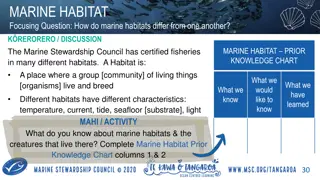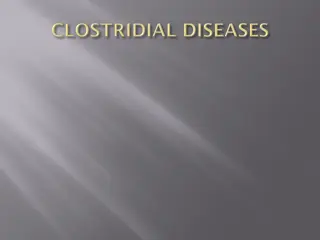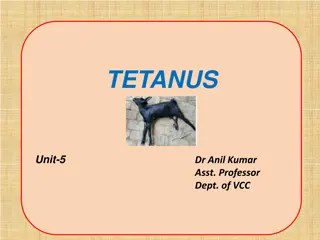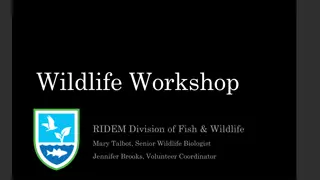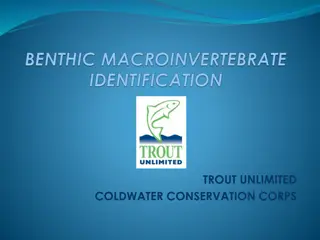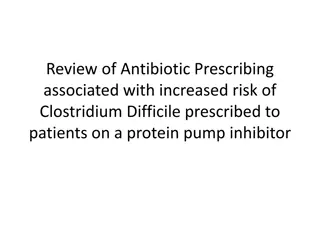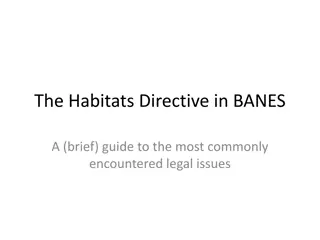Clostridium Tetani: Characteristics and Habitats
Clostridium tetani is an obligate anaerobe that forms terminal spores giving it a drumstick-like appearance. It is heat-sensitive, non-motile, and can produce toxins. Spores are found in soil and the gastrointestinal tracts of various animals. The bacterium can also be present on human skin and in contaminated substances like heroin. Gram-positive rods, C. tetani can cause tetanus, with an incubation period of 5-6 days or several months. Understanding its characteristics and habitats are crucial in preventing and managing infections.
Download Presentation

Please find below an Image/Link to download the presentation.
The content on the website is provided AS IS for your information and personal use only. It may not be sold, licensed, or shared on other websites without obtaining consent from the author.If you encounter any issues during the download, it is possible that the publisher has removed the file from their server.
You are allowed to download the files provided on this website for personal or commercial use, subject to the condition that they are used lawfully. All files are the property of their respective owners.
The content on the website is provided AS IS for your information and personal use only. It may not be sold, licensed, or shared on other websites without obtaining consent from the author.
E N D
Presentation Transcript
Date-23/12/2020 Part -1 2nd year professional course Dr. Sudha Kumari Assistant Professor Department of Veterinary Microbiology Bihar Animal Sciences University, Patna
GENUS CLOSTRIDIUM Introduction- Some species:- General Characteristics-morphology, straining Media- choice of media Biochemical character Symptom of disease I.P. Diagnosis etc.
Some species Clostridium tetani Clostridium botulinum Clostridium perfringens Clostridium chauvoei Clostridium septicum
GENUS CLOSTRIDIUM This genus contains many species of gram-positive, anaerobic and spore-forming rods. Some of them are pathogenic for humans and animals. They are obligate anaerobes capable of producing endospores. Clostridium species inhabit soils and the intestinal tract of animals, including humans. Clostridium endospores have a distinct bowling pin or bottle shape, distinguishing them from other bacterial endospores, which are usually ovoid in shape.
Clostridium tetani General Characteristics Obligate anaerobes Heat sensitive Limited flagella-mediated motility Formation of terminal spore gives drumstick-like shape and appearance 11 strains, differing in capability of producing toxins. Non -motile
Habitats Spores in soil Parasites in gastrointestinal tracts of animals (sheep, cattle, dogs, chickens, horses, rats, guinea pigs) Endospores prevalent in manure-treated soils Endospores prevalent on human skin and in contaminated heroin (source of inorganic-lead intoxication). I.P.-5-6 days or several months.
Clostridia tetani Gram +ve rods, delicate, may appear filamentous after 48 hrs incubation at 37 0C.On agar colonies are irregular and in gelatine stabs typical FIR TREE like. Round terminal spores drumstick appearance. On horse BA they are -hemolytic which tends to change into -hemolysis after prolonged incubation Clostridia tetani Hemolysis is due to tetanolysin
Flagellated and non-capsulated Clostridia tetani Strictly anaerobic Swarming growth on BA; swarming prevented by firm agar (2-3%) or tetanus antitoxin. Tiny colonies with rhizoids (medusa head appearance). No effect on egg yolk. Grows in cooked meat but no effect on the meat. Can be identified by gas chromatography. Isolation difficult in the lab.
Clostridia tetani Antigenic structure serotypes on the basis of specific flagellar antigens All share a common O antigen. Toxins Tetanospasmin (exotoxin), polypeptide, MW 160,000, released in lysis; production under control of a plasmid gene. Clostridia tetani Neurotoxin, inhibits release of acetylcholine, thus interfering with neuromuscular transmission.
Inhibits post synaptic spinal neurons by blocking the release of an inhibitory mediator = generalized muscular spasms, hypereflexia and seizures. toxoid Tetanolysis = hemolysin Antiseptic resistant Chemical agent resistant (ie phenol)
Mechanism of Pathogenicity Production of two exotoxins Tetanolysin function not determined Tetanospasim Neurotoxin
Tetanospasmin Targets Several sites within the CNS, including spinal cord and brain. PNS Peripheral nerve terminals ANS. SNS (prolonged stimulation leads to hypertension). Heat labile antigenic protein which is readily neutralized antitoxin and destroyed by intestinal proteases. Horse is very susceptible to tetanospasmin.
Symptoms of tetanus Sudden difficulties with mastication due to rigidity of masticatory muscles. Elevated temperature. The patient cannot open his mouth, this effect is named as trismus. Risus sardonicus is another sign in which trismus is combined with facial spasm.
In severe cases, spasms of the back muscles produce the opisthotonus. The patients are fully conscious, and pain may be very intensive. Stiffness of limbs, head ,neck and tail. Nostrils become dilated, ears earect, nictitating membrane is protruded mouth cannot be opened and hence called as locked jaw. Diagnosis- Take wound material Meat broth meat broth is heated at 65digree centigrade for 30 minute (inoculated at 37digree centigrade for 2-3 days) on blood agar. And incubated anaerobically. Confirmation may be arrived at by inoculating Mice s/c or i/m prophylaxis.
C. Botulinum Characteristics Anaerobic bacillus that forms sub-terminal endospores. Sever form of food poisoning named botulism. Heat resistant Found in soil, sediments of lakes, ponds, coastal waters, decaying vegetation,fruits Animal manures. Intestinal tracts of birds, mammals and fish Gills and viscera of crabs and shellfish.
Neutral or low acid environments. Usually seen in canned foods. Seven toxigenic subtypes of the organism A, B, C, D, E, F and G. Differ by pre-synaptic proteins bound at exocytosis stage. Media- on solid media large, semi-transparent with irregular edges, on blood agar haemolysis around the colonies.
Symptoms Begin 8-36 hours after ingestion of contaminated food. Paralysis of muscles in the region of mouth, animal being unable to eat, tongue protruding from the mouth. Gestroenteritis, vomiting, thirst etc. Length 2 hours to 14 days after entering circulation Preliminary symptoms weakness, dizziness, dryness mouth, nausea, vomiting After Neurological disturbance blurred vision, inability to swallow, difficulty in speech, descending weakness of skeletal muscles and respiratory paralysis.
Infant infection, establishes itself in the bowels of infants, colonizes and produces the toxin common source is honey. Unidentified source is unknown, usually from intestinal colonization with in vivo production of toxin usually from surgeries. In poultry the ingestion of botulism toxin type C disease called limber neck (weakness, muscular incoordination droping head prostration comma and death).
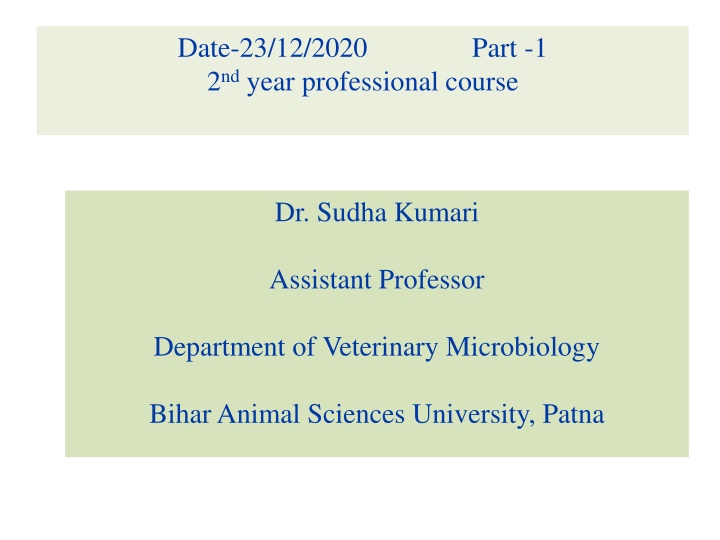

![get⚡[PDF]❤ Building Habitats on the Moon: Engineering Approaches to Lunar Settle](/thumb/21624/get-pdf-building-habitats-on-the-moon-engineering-approaches-to-lunar-settle.jpg)


